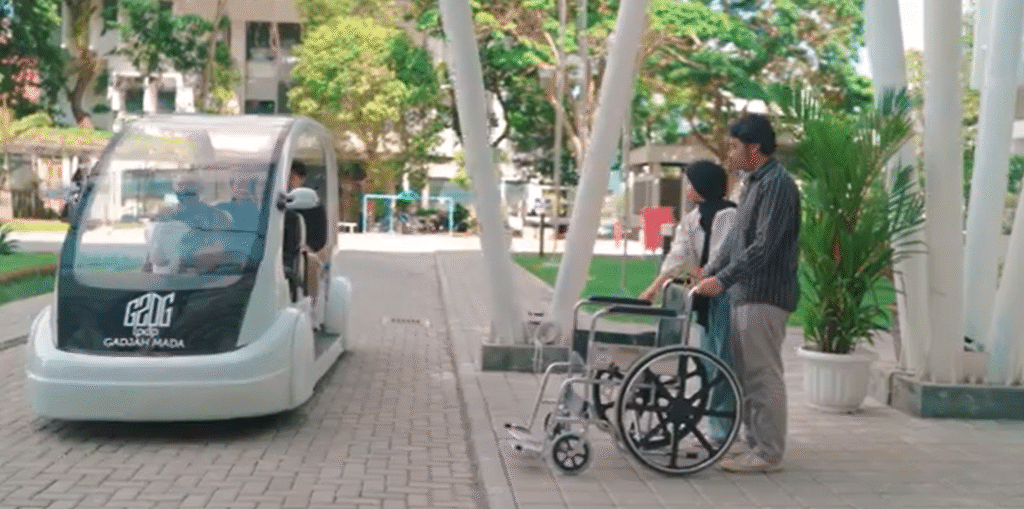Using the rhythm of nature, the new generation of learning spaces is rethinking education. Children’s perceptions of knowledge, sustainability, and connection are being subtly altered by green learning centers, where bamboo walls breathe, rainwater powers science projects, and sunlight replaces fluorescent glare. These facilities are living ecosystems rather than just classrooms, where each garden, beam, and walkway serves as a teacher unto itself.
“Learning that’s felt, not just taught” is how Chris Edwards, Head of Curriculum at Green School International, characterizes the approach. John and Cynthia Hardy established Bali’s first Green School, which was encircled by lush greenery, powered by renewable energy, and constructed of bamboo. Every lesson takes place beneath open roofs, where the rustle of leaves and the hum of cicadas take the place of the clinical quiet of concrete walls. The concept was remarkably straightforward but incredibly creative: construct a school that fosters environmental sustainability while educating the intellect.
What began as a small-scale experiment has expanded into a global movement. The same philosophy is modified for their respective climates and cultures on new campuses in South Africa and New Zealand. Every site respects its environment, whether it’s through community farming to celebrate African biodiversity or teaching Maori heritage through native plants. “Local to global” is the philosophy, a phrase that encapsulates the variety and shared goals of these organizations.
The idea of experiential learning, which turns conventional teachings into real-world action, is at the core of these schools. In the humanities, students discuss the ethics of consumption, track soil health for biology, and measure solar output to learn mathematics. The structure itself turns into a teaching tool; it is incredibly clear in terms of design but has deep layers of meaning. These centers give the impression that education is extremely effective and profoundly relevant by integrating subjects through real-world applications.
Profile: Green School International
| Field | Details |
|---|---|
| Founders | John and Cynthia Hardy |
| Established | 2008, Bali, Indonesia |
| Concept | A nature-based, sustainability-driven educational model integrating environmental awareness with academic rigor |
| Educational Approach | Experiential, project-based learning emphasizing environmental stewardship and global citizenship |
| Global Presence | Campuses in Bali, New Zealand, South Africa, and upcoming in Tulum, Mexico |
| Key Philosophy | R.E.A.L – Relational, Experiential, Authentic, Local-to-Global learning |
| Recognition | Featured by UNESCO, Brookings, and the Center for Green Schools |
| Mission | To cultivate changemakers equipped to address sustainability and climate challenges through creative, purpose-driven education |
| Website | https://www.greenschool.org |

Students may turn a math lesson into a sustainability project in which they figure out how much energy would be saved by using natural lighting instead of artificial lighting. Environmental poetry, which combines ecology and emotion, could be covered in a literature class. This multidisciplinary approach is exceptionally successful in fostering empathy, critical thinking, and resilience in addition to being intellectually engaging.
Students in eco-designed schools report increased engagement, reduced sick days, and better concentration, according to the U.S. Green Building Council. Natural light, clean air, and organic materials create an atmosphere that makes learning feel energizing rather than stifling. Spaces created for creativity and well-being also give teachers new life. It is an ecosystem of education that promotes both intelligence and health.
With their New Green Learning Agenda, researchers Christina Kwauk and Olivia Casey of the Brookings Institution broadened this perspective by defining sustainability as a mindset of justice and transformation rather than just environmental literacy. Three levels of engagement are described in their report: green transformation skills for rethinking systems themselves, green life skills for mindful living, and green technical skills for sustainable jobs. It’s a framework that closely aligns with the intuitive practices of Green School Bali and others.
This method turns education into a force for social change. Students are doing sustainability, not just learning about it. These students are change agents, whether they are developing local recycling initiatives, restoring mangroves, or designing biodegradable packaging. Collaboration with local communities significantly improves their actions, transforming theory into common practice.
The shift is also redefining how teachers teach. Teachers are facilitators, directing inquiry rather than prescribing course, as opposed to strict scripts. Questions like “How can we make our campus zero waste?” naturally lead to lessons. What substances can take the place of plastic? Students are encouraged to think critically, act decisively, and think broadly by these prompts. It’s education that feels alive and is always changing to the beat of nature.
Many of these ideas were formalized by UNESCO’s Green School Quality Standard, which emphasized the need for sustainability to permeate both education and daily life. Every component becomes a part of a single philosophy, from compost-driven cafeterias to water-efficient plumbing. For students growing up in the digital age, this all-encompassing integration is especially helpful because it serves as a reminder that creativity can come from both soil and screens.
Philanthropists and celebrities are starting to pay attention. Longtime environmentalist and actor Leonardo DiCaprio openly endorsed the Green School movement, calling it “a model for what education should look like in the 21st century.” Similarly, Queen Noor of Jordan hailed it as a “blueprint for peace through sustainability” for empathizing with others through environmental awareness. Their support demonstrates how environmental education is now essential to world advancement rather than being a side issue.
The allure is not limited to private schools. Variations of the model have been implemented by public education systems in Singapore, Finland, and Costa Rica, incorporating sustainability-based curricula and energy-efficient infrastructure. It lowers operating costs while encouraging civic responsibility, which is why governments see it as both economically and socially intelligent. Utilizing renewable technologies, these facilities transform into sustainable development labs that provide real-time training for upcoming innovators.
